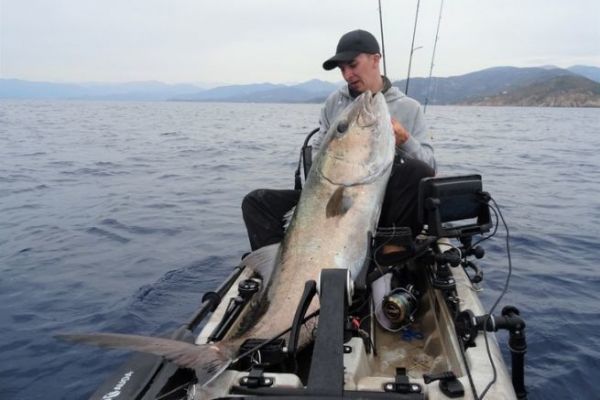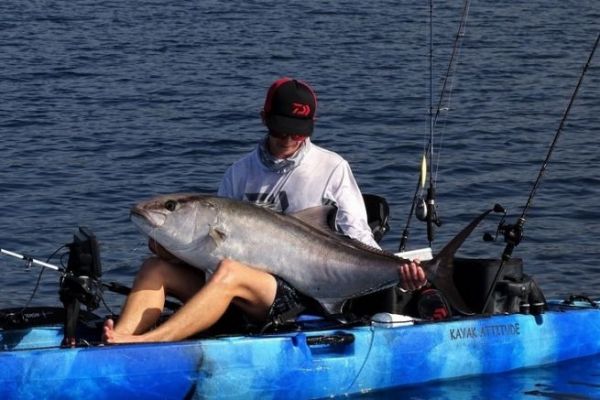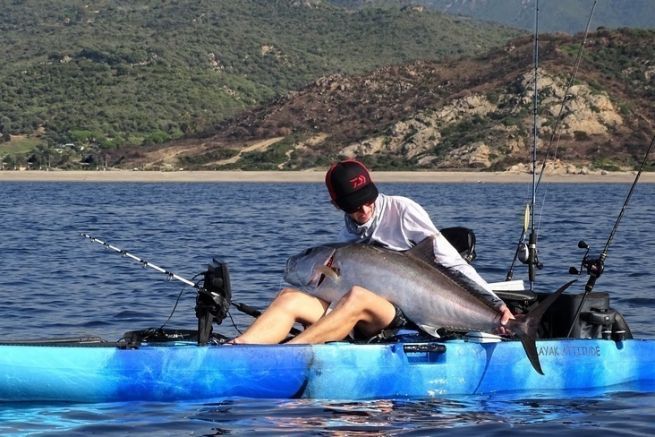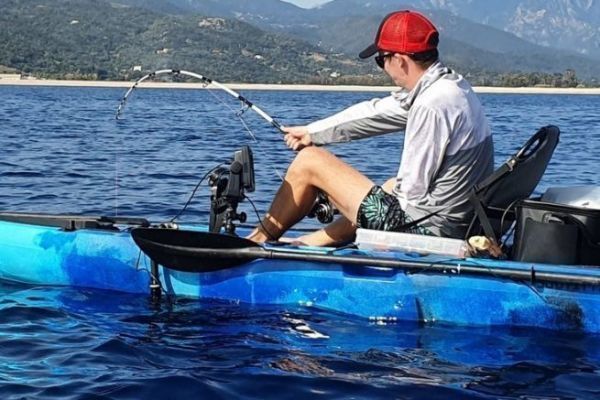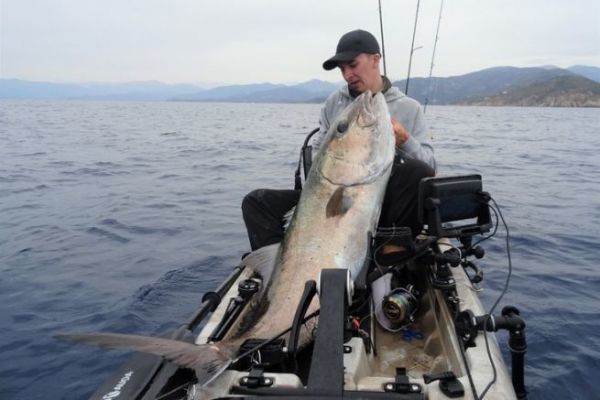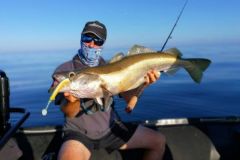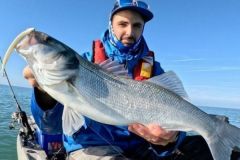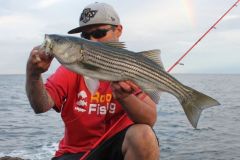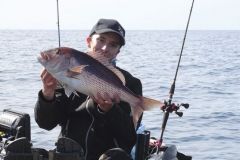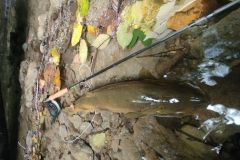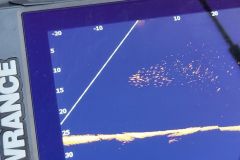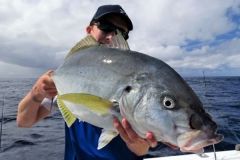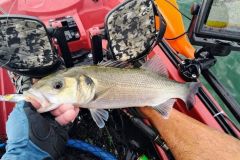Keeping a live one in top shape
It is absolutely necessary, when fishing large fish such as tuna and especially amberjack, to have a live fish. The small pelagics, which are most often used, are fragile fish and may die quickly if the right choices are not made. These fish have a natural need to swim at high speed all the time to cool their body temperature and to have enough oxygen. When they are restricted by hooks and a kayak at the end of the line that prevents them from escaping, they are at high risk of asphyxiation within minutes.
Unless you are already in the area where the predators are when you catch your fish, you will have to take care of it to bring it in good shape to the strike zone. To do this, you must keep the fish within 30 meters of the kayak, if possible without lead, especially if you are on shallow areas where no predators are present. The speed necessary for the fish to swim comfortably behind you, without giving up the soul, should ideally be around 2 knots. This can be tiring, especially with a big fish that brakes your kayak easily and sometimes over a long distance.
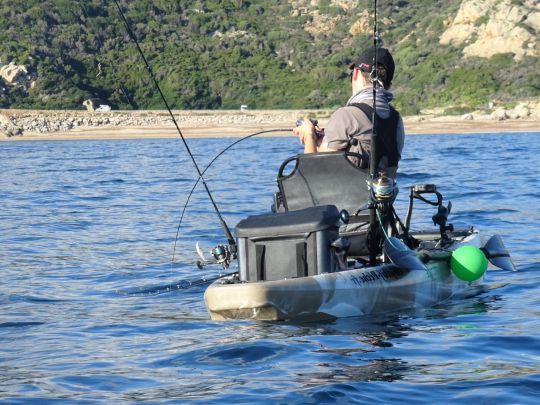
Arrival in the area
Once you're near areas where predators may be present, which you may have seen earlier in the day by passing over them with your sonar, you'll need to slow down. This is the time to tie your sinker on your line and let the fish down. To prevent the fish from rising too high in the water and not being effective, the speed should be stabilized between 1 and 1.5 knots. Always keep an eye on your sonar, although most starts occur without seeing anything on your screen, the indications it gives are very useful.
Predatory fish often hang out in the same layer of water, which varies with thermocline depth and light conditions. For example, if your sonar unit often finds echoes in the 30 to 40 meter band in 80 meters of water, your fish will have to pass between 5 and 15 meters above the predators. A livebait and our rig, which passes under them, will certainly scare them off. Remember to count in meters the depth at which your lead is to pass in the right place.
The last moments before the key
You have probably already spotted big echoes, your livebait is in great shape, it struggles and even makes your rod bend, the time is approaching. It is frequent to be able to recognize the behavior of the alive one before a touch, it will suddenly become irritated then immediately stop. It is at this moment that the predator seizes it and that your rod will start to load slowly. When the fish understands the trick, a big start follows in the wake.
In these moments, it is imperative to remain calm and not rush things. Quickly open your reel's drag so that the predator engages the livebait correctly, turn your kayak around to face your line, tighten your drag, and make several powerful hooking shots to set the hooks.
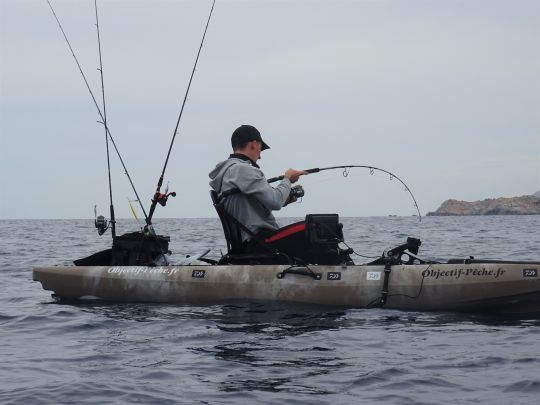
Be careful, never do with your kayak askew and a too tight brake, under penalty of turning around and join the fish if the predator decides not to let it.

 /
/ 